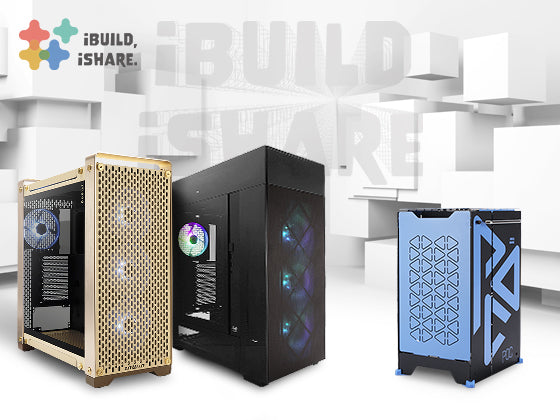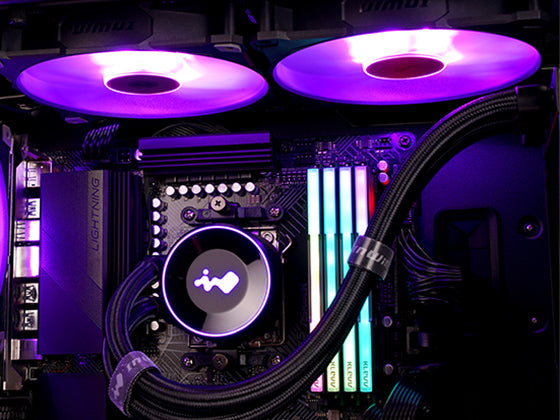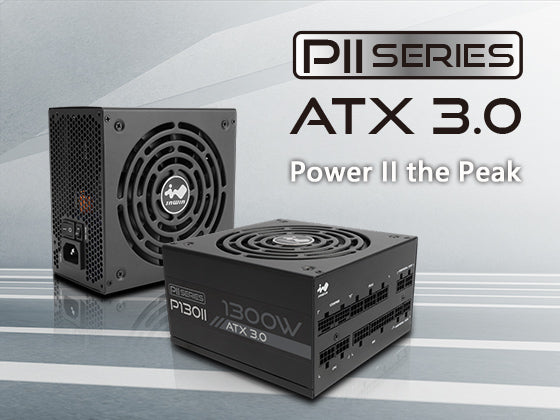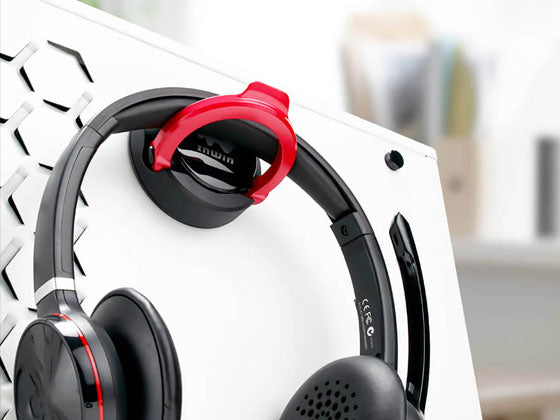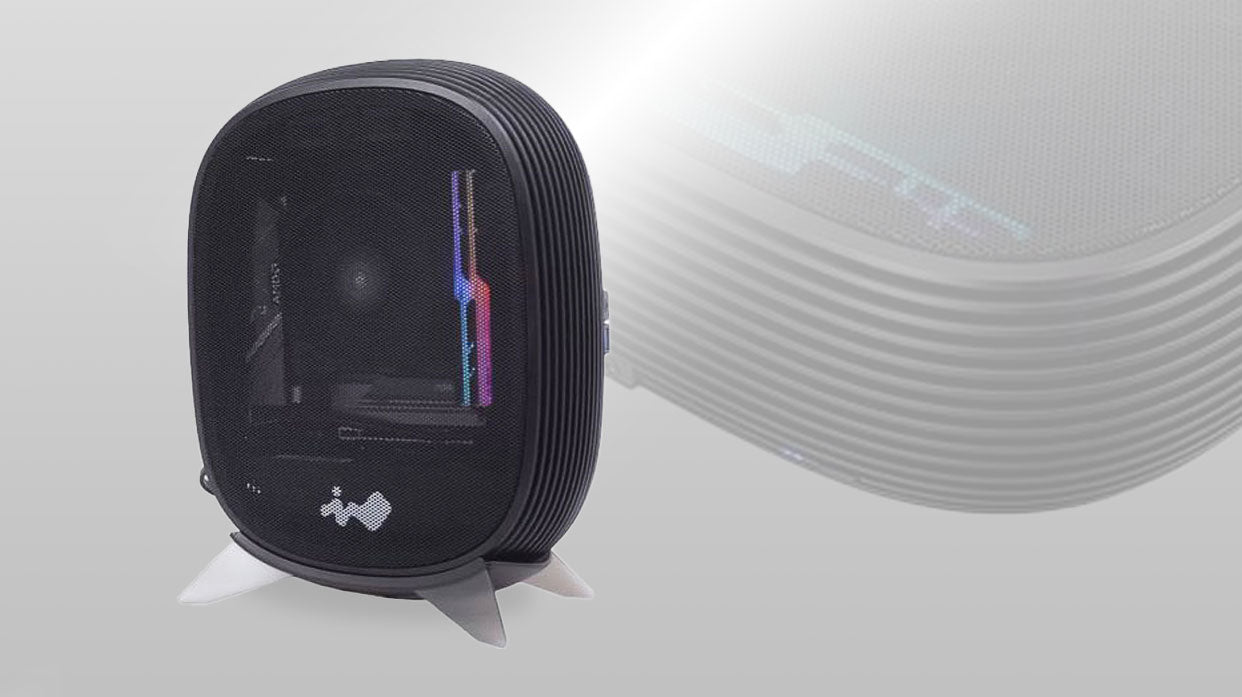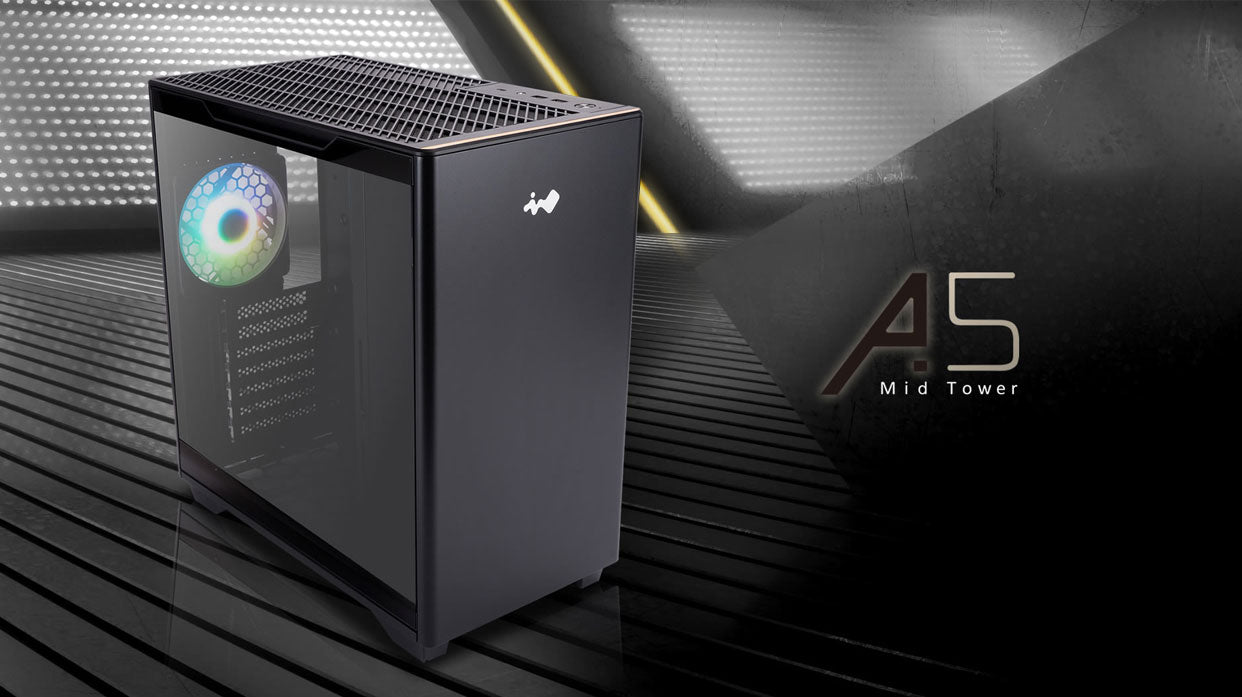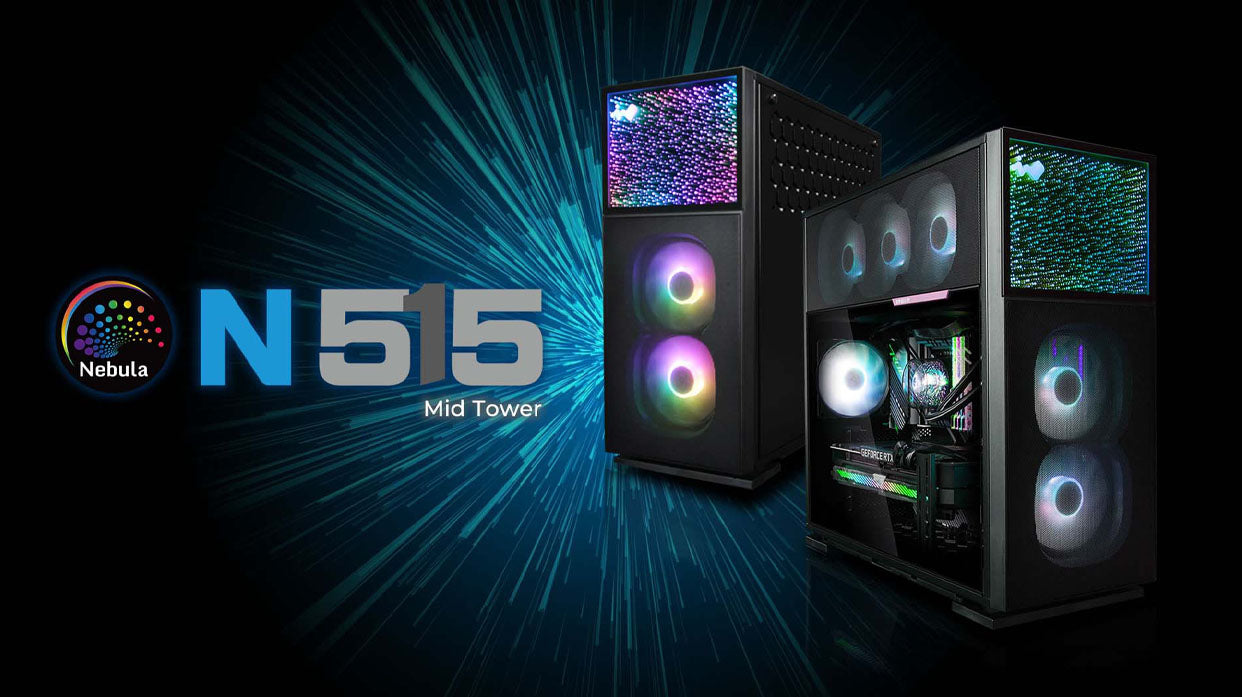Website: http://www.xtremesystems.org/forums/showthread.php?297599-InWin-B1-Mesh&p=5272089#post5272089
Introduction
Mini-ITX system builds have become big business as more and more consumers are looking for compact and stylish PC solutions for their home office and living room. The InWin B1 certainly fits the bill. The InWin B1 mini-ITX case has been introduced back on 2020 with a minimalist look that can be used vertically or horizontally. Some of the main features of this Mini-ITX case was the extremely small footprint, and the vents that are incorporated into the exterior design of the case. These two features make this box perfect for work from home office or some not too powerful gaming equipment. While the little B1 offered a wooden upper panel a few weeks ago, now InWin brings a new variation with the B1 Mesh, which quite logically offers mesh on the top. A very different approach for a case which is now offered in three different versions so that everyone finds something to suit their tastes, but also the cooling needs of the configuration which remains limited to 60 mm for the processor radiator, with an 80 mm fan present by default on the side (or the top if the case is installed vertically via its support supplied as a bundle). While the glass looks great, it does lead to some relatively high temperatures, and while these won’t come close to putting your PC at risk, they do come with the annoyance of high fan speeds. Inside, the power supply is still 200 W with an 80 PLUS Gold certification. No PCI bracket is present, and we will therefore opt for a processor with an integrated graphics part. As for storage, it is installed on the back with two 2.5" slots, plus a cutout in the motherboard support for quick access to a possible M.2 slot.

See the table below for the full product specifications.


Packaging & Contents
Due to the design of the box, the cardboard is small in size 141 x 336 x 287 mm for a weight of 2.2 kg. It comes in the classic brown color of the cartons with black lettering. On the front of the box we have the presence of the InWin logo and a stylized version of the case with its own logo.

On the back of the box, we find the characteristics of the box.

On the left side of the box, there is no major information. We mainly have references related to the case. Note that there is an “Others” box for the colorway which means the B1 is also available in Tempered Glass and with Wooden pop-off top.

The right side gives us more information. Apart from the brand logo, there are pictograms and text. Some repeat themselves. Thus we know that the box can be positioned horizontally or vertically. That the top of the case is made of tempered glass. As mentioned before, a 200W power supply is provided, as well as a fan and dust filters. InWin also insists with environmental measures. The B1 is RHS certified. The RoHS directive aims to limit the use of certain hazardous substances in electrical and electronic equipment. Finally, InWin wants to limit the ecological footprint of its product.

Once the box is opened, we find the box caught between two blocks of polystyrene to avoid any shock during transport. InWin has decided to provide additional protection by slipping the case into a protective imitation fabric pouch.

The accessory package is quite small, as you might expect for a simple case like the B1 Mesh. They did include stickers so you can remove the mounting feet and have a streamlined look if you intend to use the upright stand as well as the needed screws and some zip ties. You will need to flash the QR Code to obtain the instructions.

A Closer Look Outside
First impressions of the B1 are certainly interesting, as this case doesn’t really look like anything else I’ve ever had in the office. Sure, I’ve seen things in a similar form factor, but nothing that looks as unique as the inWin B1 Mesh. The exterior is primarily made from a durable matte black plastic, except for the mesh top panel. The overall build quality is impressive for a case of this price point. The case feels very sturdy and not flimsy or flexible at all. We feel very confident this case will protect all your sensitive computer gear.

Only the white InWin logo contrasts this black set.

It’s a pretty cool design really, as it allows you to show off the hardware in this rather beautiful case design. There will not be a whole lot of airflow, so packing a high TDP processor in here might pose issues down the road if the computer will see high-stress loads.


There’s an included stand in the box, just sit the case on top, no fuss really. As you can see, stand the case up and it looks even cooler! Certainly a unique look and looks more like a weird spaceship this way. Plus, you can really show off that gorgeous piece of mesh which has been cut to fit the curves of the case.

The feet give the case just enough space on the side to ensure those side/bottom vents get enough airflow. However, the bottom feet are hard-fixed to the case.

The front face is all round. To break the too monolithic design InWin decided to opt for blades. One might think that it is to bring fresh air to the configuration but it is only a stylistic effect, the facade is completely closed. On the front, you’ll find a single USB port and a combined (4-pole) audio jack. It’s not much, but it’s clean and simple and I’m OK with that.

There’s a power button integrated into the design here too.

On the rear panel, there is a large opening that will receive the inputs and outputs of the motherboard. On the right there is the possibility of adding a Kensington lock. Finally at the end of the box is the InWin power supply.

A Closer Look Inside
Accessing the interior requires removal of a total of 4 screws. Two on the back side just above the I/O to remove the top cover and glass panel (it required a bit of force to remove the first time, which I was worried would break the plastic case). An additional two on the bottom of the case (near the feet) can be extracted to remove the bottom cover over the 2.5 drive bay. I also like that all the internal cables are black, as it makes it easy to get a clean looking build, which is important given that you can see your components through the plentiful ventilation.

After opening the case you will find the included plastic stand for vertical mounting, as well as all the cables you will need.

On the interior, things are actually pretty cramped, but that’s to be expected given this is a particularly small PC case to begin with. Of course, we can’t skip over the fact that the PSU is pre-installed, and that eats up a fair amount of space. It appears to be a TX form factor PSU, but since it’s an InWin PSU in an InWin case, compatibility isn’t an issue regardless of its form factor. It’s a 200W rated unit, which is a huge amount for a system that doesn’t take a dGPU. Of course, you have room for a mini-ITX motherboard here too, and there’s a small amount of space flanking the motherboard mount for routing the cables, which are of course, already pre-installed in the case from the PSU. You’ll still get 60mm clearance for a CPU cooler, which means you’ve got a choice of the stock coolers for most CPUs, but there are plenty of good aftermarket ones out there too.

The included PSU comes with a 3-year warranty. It bears the reference IP-AD200C7-2. It is ventilated by a 40 mm fan. It offers a power of 200W and is certified 80 Plus Gold. Its dimensions are 52x40x170 mm. InWin the 3-year warranty. By design, the power supply box only offers three connectors. The classic 24 pins and 4+4 pins for the motherboard and a Sata socket. There is a fan filter on the PSU side.

In addition to the power cables, there is the 4-pin port for the 80 mm fan and the cable for the jack on the front. Of course there is a cable for the USB 3.0 port and more surprisingly a ground wire.

In the top, you’ll find a single pre-installed 80mm fan, which may not seem like much, but the relative size of the fan to the space requiring airflow, it’s more than enough. It bears the reference DF0801512SELN, it has a thickness of 15 mm. On the manual it is indicated that it has a rotation between 600 and 2500 rpm in PWM mode. It offers a flow rate of 24.09 CFM for a static pressure of 1.08 mm/H2O and a noise level of 23.55 dB(A).

Tucked into the bottom of the case, you’ll find a second compartment. Here you’ll find room for a bit of extra storage, allowing a pair of SSDs to be mounted in the case. Of course, if your motherboard supports M.2, you can get in even more drives too. I love that they’re pre-wired on this side too, just plug into the SATA connectors and you’re good to go.

Installation Process & Finished Looks
Fitting a system inside this is actually pretty easy, it has a space just big enough for a mini-ITX motherboard and that’s about it really. Just drop it in, four screws and you’re done. Keep in mind, you may want to install the CPU cooler prior to installation of the motherboard, as there is not a cut out on the back plate to attach the retention nuts for most coolers. Additionally, if you are using a larger cooler it can be difficult to route the cables with the board installed. I got away even easier as that low-profile Ιntel cooler uses pushpins fasteners that only took about 10 seconds to fit. Overall, this may be my fastest PC build ever. There’s a good amount of space here for cables. I know it doesn’t look it, but when the lid is back on the case, it sits fairly tall and leaves a nice cable cramming void. There’s no GPU going in either, obviously, so cables are free to run around the motherboard as required. The motherboard sits just next to the PSU on the side of the case, no wasted space here. Routing the top CPU cable is a little trick, best make sure it doesn’t rasp against that fan. However, a few cable ties could always fix up awkward cables with ease. Keep in mind that the included InWin fan is setup as an exhaust fan, so you will need to be careful that your cables are kept clear of the fan intake.

The vertical stand is great though, it totally transforms the case and it also takes up a lot less space on your desk this way.

You just have to position the four screws on your SSD or hard drive.


And slip it into the slots provided.

With everything installed there is a bit of cable clutter, but fortunately it is not easily visible as all of the cables are black and the mesh hides them well.

Although you could use this case for any ITX purpose, we feel most of the end-users will implement the B1 Mesh as part of the decor in a media room or similar environment.


It looks like an expensive TV stand.
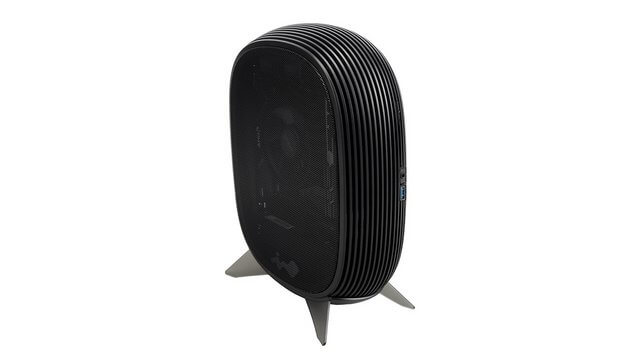
Introduction
Choosing the correct cooler for this case could pose a challenge due to the height limitation. Based on our research, the Noctua NH-L9i is one of the highest-rated coolers we found that fits within the requirements. Here are just a few of the many coolers that fit within the 60 mm height limit, in order of max height.
Thermaltake Engine 27 1U Low-Profile CPU Cooler (27 mm)
Noctua NH-L9i Low Profile Cooler (37 mm)
Cooler Master MasterAir G200P RGB low-profile (39.4 mm)
CRYORIG C7 Low Profile CPU Cooler (47 mm)
ID-COOLING IS-47K Low Profile CPU Cooler (47 mm)
SilverStone NT08-115X-V2 Nitrogon Series Low Profile (47 mm)
Raijintek Juno X Low Profile CPU Cooler (58 mm)
Cooler Master GeminII M4 Low Profile Cooler (59 mm)
Testing
To put this case through its cooling paces we will be using a test system consisting of an Intel 12100 and multiple storage drives. This system allows us to produce a substantial amount of heat and effectively test the InWin B1‘s cooling capabilities.
For stress testing we use Blender benchmark to stress the CPU to create the maximum amount of load the system is ever likely to see.
Test System:
Processor: Intel 12100
Motherboard: ASRock Z690M-ITX/ax
CPU cooler: Intel Laminar RM1 air cooler
Memory: G.Skill Trident Z RGB 32GB DDR4 RAM (2x16GB) @ 3200MHz
Graphics card: UHD Graphics 730
Storage drives: 480GB SanDisk Extreme Pro SSD and 1TB Seagate HDD 2.5"
OS: Windows 10 64-bit.

Bear in mind the cooler’s job is to keep 65W TDP chips operating at reasonable temperatures without causing a racket. Running the all-core Blender benchmark thrashes the chip and duly propels long-term power to 60W. Examination of performance figures reveals the fan, which is on at all times, cranks up from a base 1,300RPM to 2,500RPM very quickly. It then modulates depending upon exact load. Taking the last five minutes of load into account, 62°C is a perfectly acceptable figure for a Core i3-12100. Upping the power target to 89W, which the cooler is not supposed to manage, still reports an okay-ish figure. No thermal throttling is in evidence. The compartment for the motherboard and CPU is very tight on space however the airflow through the case kept our Intel 12100 nice and cool. The stock Intel cooler is a feeble piece of hardware but does an adequate job and the way that InWin B1 has positioned that mesh directly above the CPU means we have no grounds for complaint. The 80mm fan at the side of PSU was practically silent at low loads and only span up to audible levels at very high loads. We'd have no problems sitting next to it on a desk.
Final Thoughts
Over the years we’ve seen many different cases tailored for media center’s, but most of them end up being a small black rectangle. InWin is known for its innovation when it comes to computer cases, and the B1 Mesh is no acceptation. It’s something new and fresh for the small form factor community. There’s not a lot to this chassis, as it’s quite compact and has minimal features, but there’s certainly a lot to love about it. The compact form factor is not far off what you would expect from a games console or digital set top box either, so having it up on top of your desk, or sitting snug under your TV means it will be appealing to those building a compact workstation or HTPC. To put it simply, In Win has done something quite amazing with the B1 Mesh chassis. While not a performance king, it didn’t need to be to succeed. Instead, In Win has focused on making the B1 Mesh unique to look at and incredibly easy to use. That’s actually a really important factor in this price and size class, because while bigger, more expensive cases that appeal to serious enthusiasts can get away with being “fiddly” and requiring a sub-reddit to learn how to use, that would be inexcusable in a case like the B1 Mesh, which is targeted at low-cost, low-powered systems. We think In Win really nailed it in terms of the user experience. Building a system with the InWin B1 Mesh couldn’t be much easier than it is. You can access the interior of the chassis by removing two screws, and the same for the rear section of the chassis for adding your storage drives. The PSU is built-in and all the cables you need to fit a motherboard and two storage drives are all in there and ready to use. With audio jack and a USB 3.0 port on the front (we’d really like to see is a second USB port up front), you’ve got all the connectivity you’ll need for a common HTPC or desktop workstation, and while 2 x 2.5″ drives may not be a lot, the cost of higher capacity drives is pretty good these days. A 3.5″ drive would be appreciated, but we understand that adding something like that would only increase the overall size of the chassis. With low power systems it runs fine and temperatures are not an issue thanks to the mesh top panel. Generally speaking, we believe most users wouldn’t be looking to put Intel’s flagship mainstream processor in this case. Although we loved the overall style and exterior, the InWin B1 Mesh does have a few downsides that we’d like to summarize here. The first limitation is the 60 mm cooler height. This does limit the cooling options as well as the overall heat output that the case can support. Also due to the incredibly small size, you cannot use a dedicated graphics card or any other computer accessories.

You can purchase the InWin B1 Mesh Mini-ITX Chassis for 129.90€. Looking at other ITX compatible cases , we see the InWin B1 Mesh is one of the least expensive options that includes a power supply. If you're in no need of a discrete graphics card, then we can think of no better home for your hardware if you want as small a system as possible, but still want something that has style on your desk. It’s easily an ideal solution for HTPC style builds.




